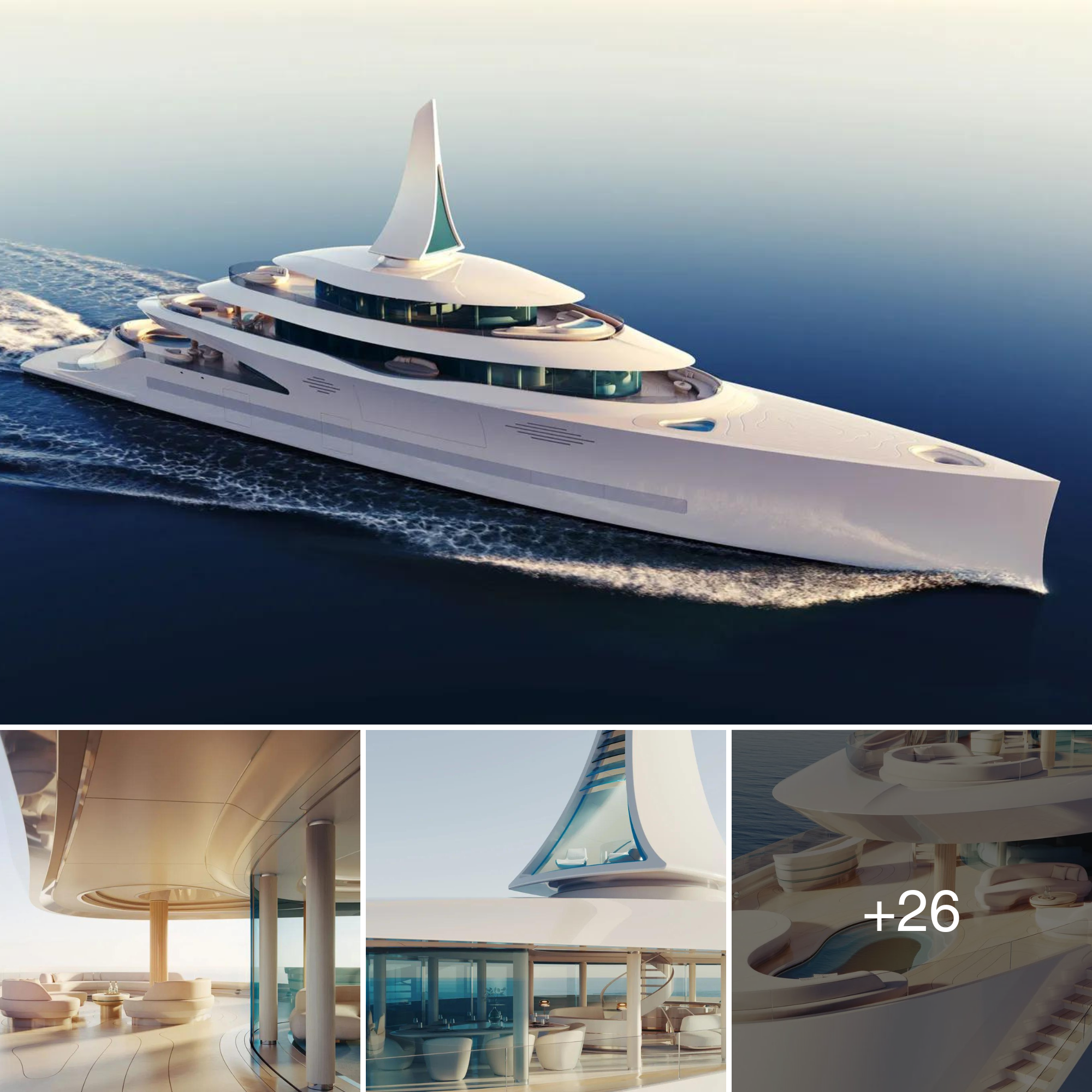
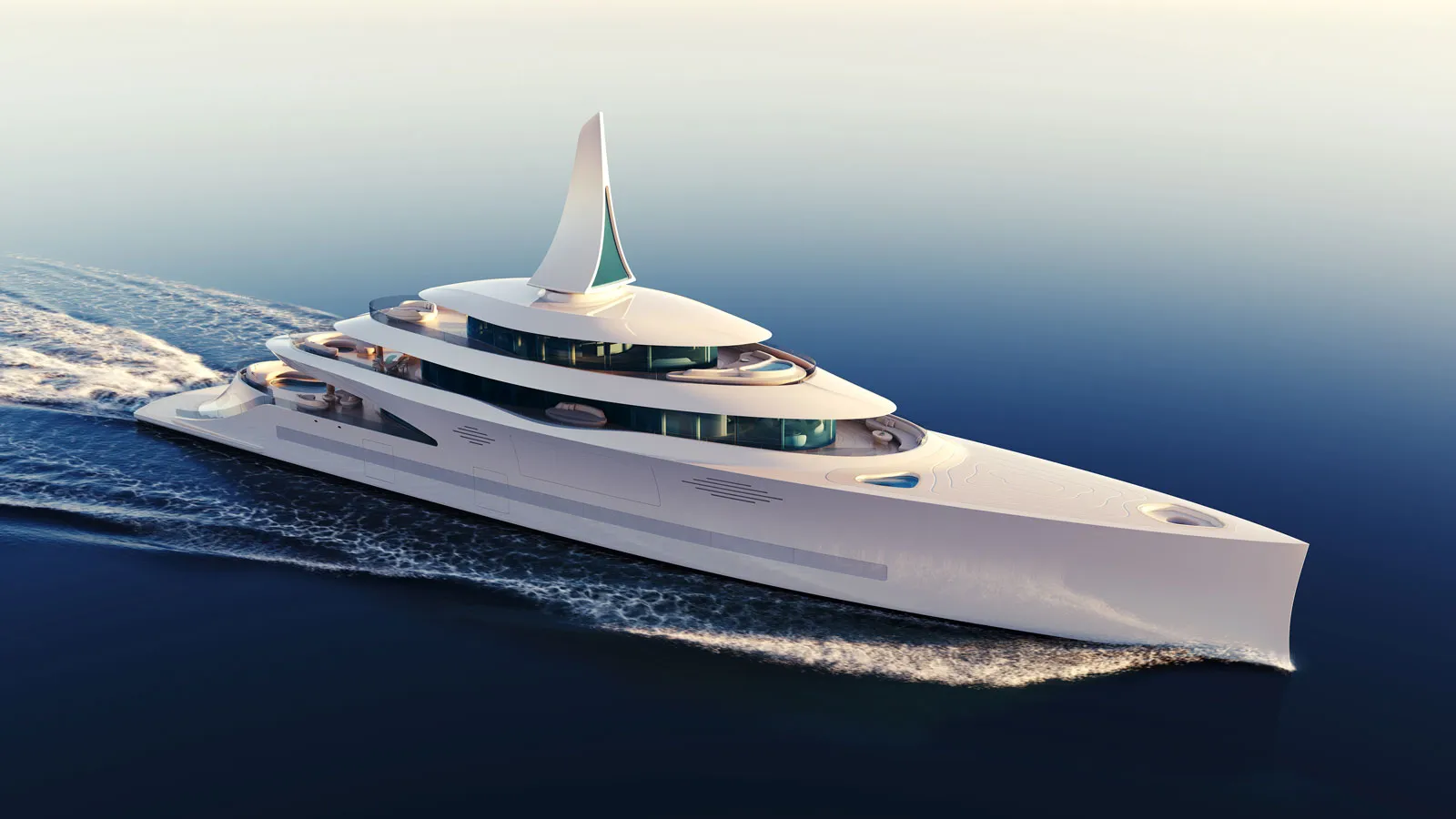
At the Monaco Yacht Show, Feadship revealed its 83-metre eco-concept Dunes, which has been regarded as a “big leap” towards the shipyard’s goal of “net zero superyachts.”
Dunes is predicted to “eliminate up to 95 percent of the potential negative environmental factors associated with operating a superyacht” as compared to a boat fulfilling today’s minimum environmental rules, according to YETI tooling. Dunes will be constructed of “low impact” and “high scrap content” steel and aluminium, with eco-friendly features such as a signature cooling mast design, extra-capacity storage batteries, a new form of fuel cell, and a radical propulsor.
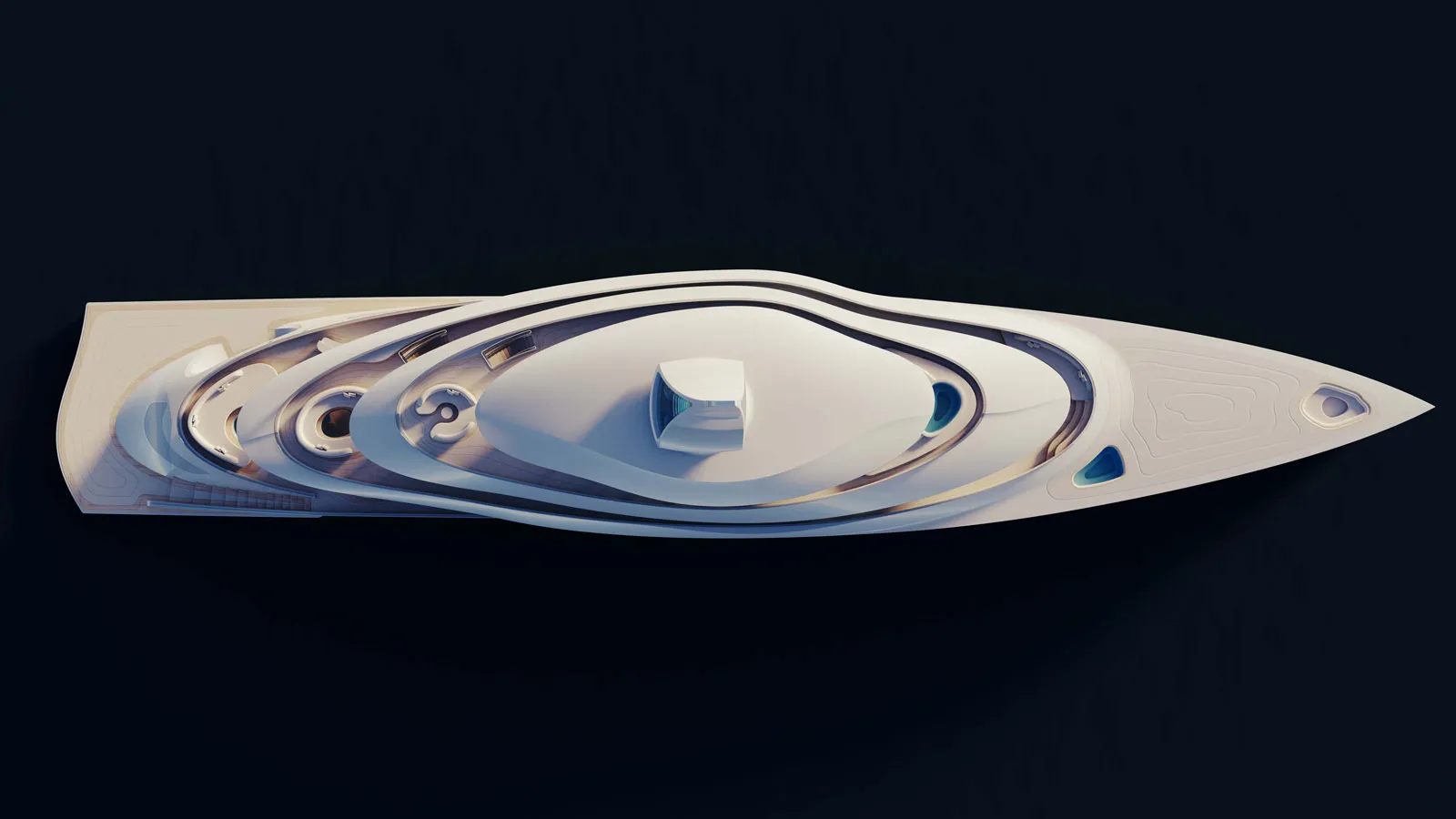
Dunes’ unique style was created by Studio De Voogt to replicate “undulating waves, not of water, but of sand.” The asymmetric superstructure and lack of straight lines generate an organic appearance, resulting in an inconsistent body that appears to “shift with light and shadow.” The redesigned ventilation system and relocated bridge in the design represent an advancement from previous Feadship designs Breathe (2010) and Pure (2021).
The vast, shaded walk-around decks on the Dunes are an important feature, providing protection from the elements, various circulation paths, and plenty of outdoor sitting. Studio de Voogt imagined alfresco lounges that would seem “as islands on the decks,” therefore they were created in golden maple wood, an eco-friendly alternative to teak. All staircases are round or slightly curved, as are the full-height glass windows and doors, which reduce heat loads by “60%” thanks to curving overhangs supported by a maple-clad column. Teak has also been phased out of all decking, which is now made of millions of small glass and stone chips sealed in an aliphatic polyurethane resin.
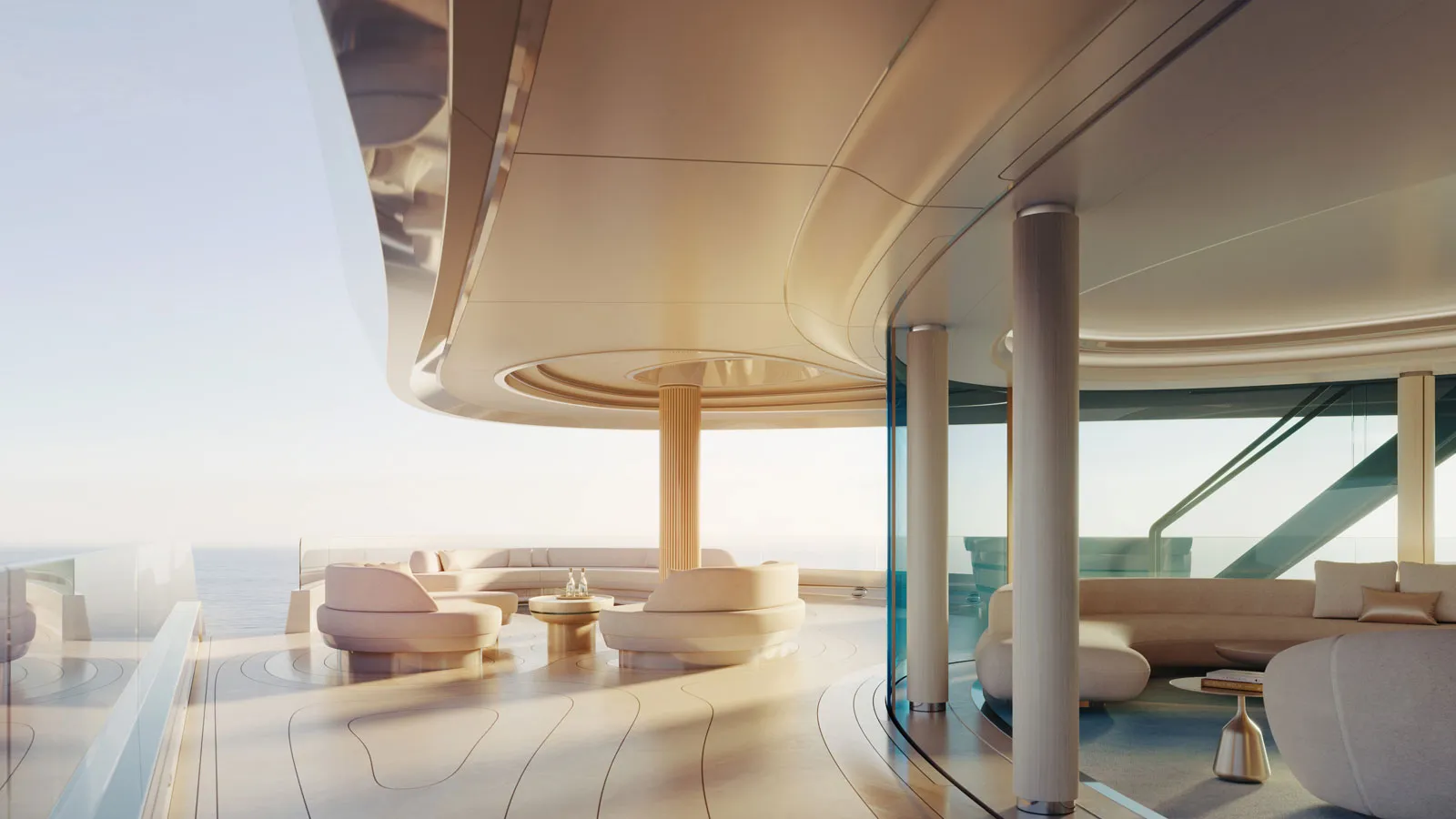
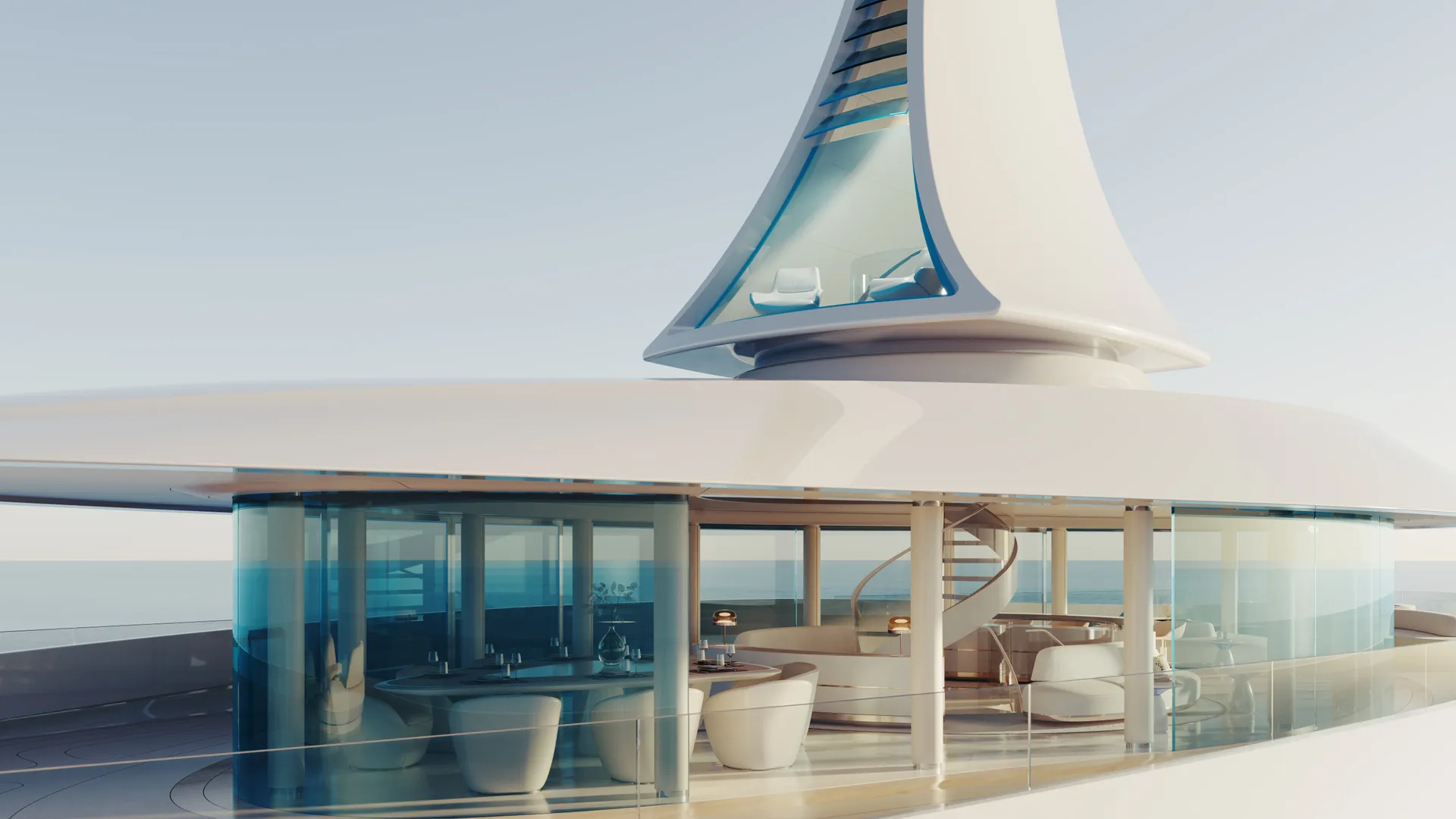
Notably, the uppermost pavilion deck structure is made of “CO2-negative” treated wood, which has a high natural insulating capacity without adding superfluous weight. The upper deck, which is surrounded by glass, has a Jacuzzi and an informal eating area and can be outfitted for “any number of purposes, from night club to conference room.”
Circular stairs lead from this room to the yacht’s characteristic 10-metre mast, which is part of the “Cool Core Concept” of Studio de Voogt. The mast is shaped as a triangle of convex and concave foils, which draw air up the central staircase from other parts of the ship without the use of fans or ducts. According to Feadship, this “simple physics” reduces HVAC energy use by 35% on an annual basis. The mast has also been designed with a small, two-blade vane for solar and wind power, which can produce around 25 MWh per year when used just at anchor.
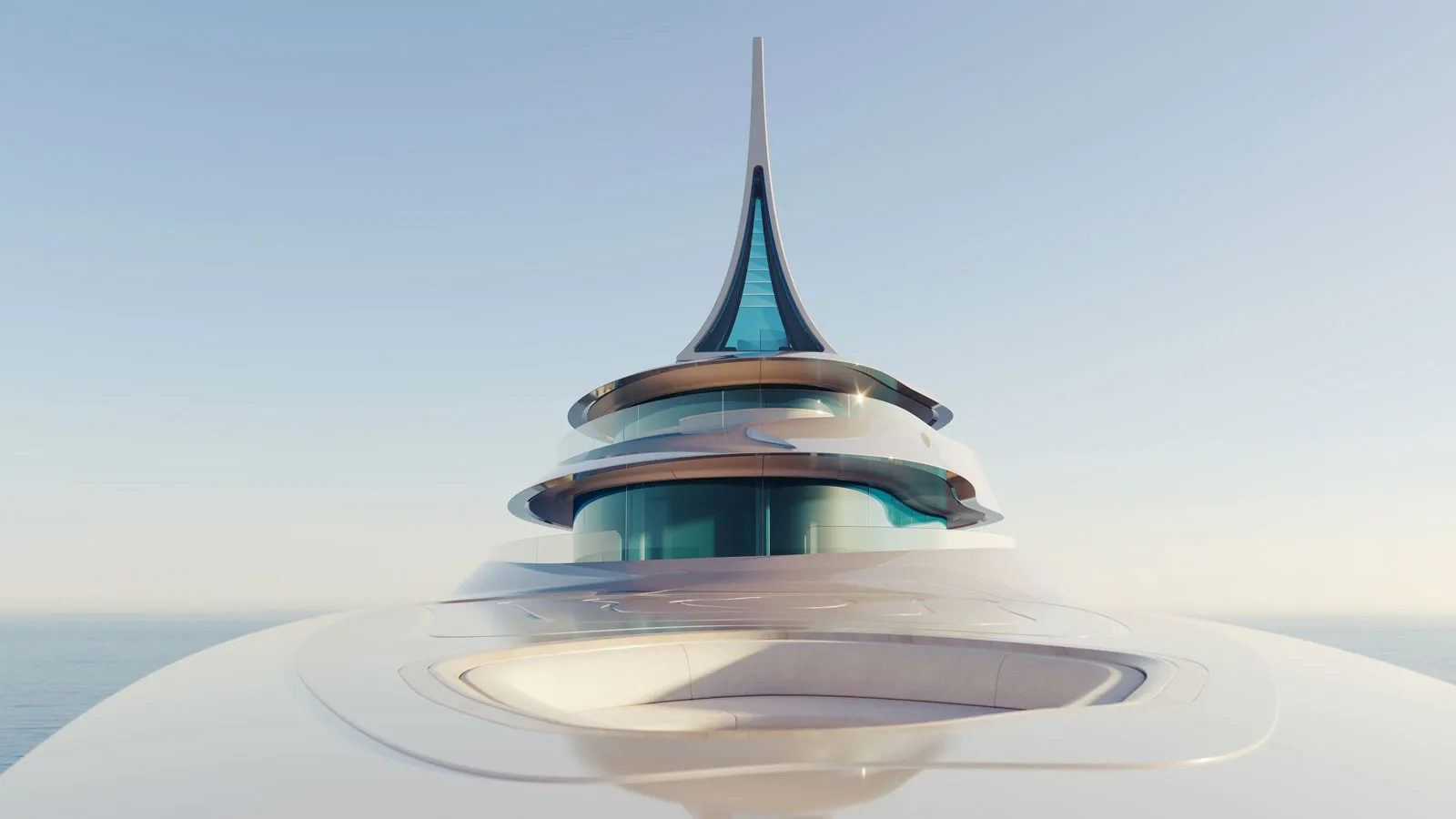
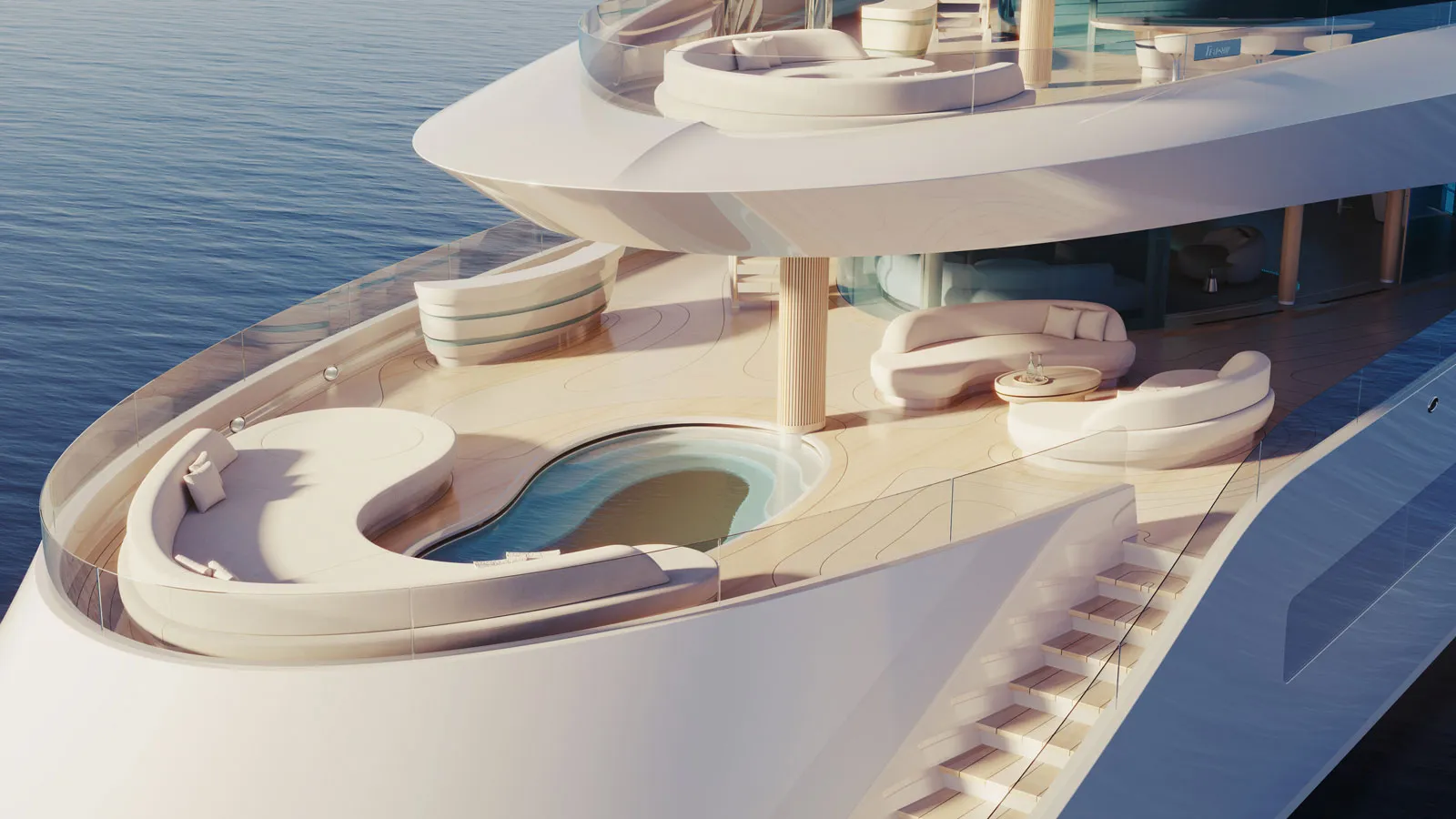
While no specifics have been released, Dunes will be propelled by ABB’s ABB Dynafin, a high-efficiency electric propulsion system.
The Dynafin, which has been in research and testing for ten years (and was debuted last May), uses revolving, vertical blades to simulate the propulsion of a whale’s tail – apparently “one of the most efficient forms of thrust ever seen.” Because of its high energy density and simplicity of storage, “green methanol” is used as a reaction agent in solid oxide fuel cells, which power the system. It is expected that the first Dynafin prototype would be available in 2025.
According to BOAT Pro, Feadship is currently building 15 yachts. The shipyard’s enigmatic Project 822 was recently launched at its Van Lent location on Kaag Island.